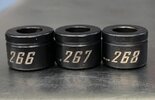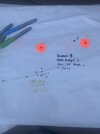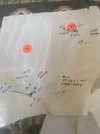Agree. Standard FL sizing dies, properly set up, work great for hunting rifles. You don't need a mandrel for even virgin brass. I generally run virgin brass through my resizer, with the expander ball, and it works just fine. If you've got pronounced neck dings, you can straighten them out enough to run through your die with a small dowel or a screw driver or somethinge else before resizing the first time. I'm sure the target guys are cringing, but it works fine in a hunting rifle.
But I have some follow up questions for folks about using mandrels. I haven't used them before but am thinking about trying one to test in a target rifle just because. I've done some looking recently, and a couple of OP's comments and questions tied into questions I also have.
My understanding is that the Wilson mandrel, being .001" undersize, is really intended just for virgin brass and that it's not really intended for setting neck tension on fired and resized brass. Is this correct?
For setting neck tension on fired and resized cases, I've seen folks on the interwebs point to 21st Century or Sinclair mandrel dies and the mandrels that are .002" under bullet diameter. However, I see 21st Century has a host of different sizes for each caliber, in half-thousandth increments, and Cortina now offers offer mandrels .002 and .0015 under bullet diameter. I was planning to get a mandrel .002" under bullet diameter to play with, but I don't know what I don't know.
So when selecting a mandrel, which diameter do you usually start with? .002 seems like the default starting point, but is it? When would you use a .001" or .0015" undersized mandrel (or other size) and why? For this rifle, I'm currently using a Redding Type S full length bushing die with the expander ball still in it. If I remove the ball and switch to a seperate mandrel, will I need to adjust which bushing I'm using? I think my current bushing is .002 (maybe .003, I'd have to check my notes) under loaded round OD, and the expander ball is pretty light if it's touching. Would you start with a bushing a size smaller when using a mandrel? Am I way off?





